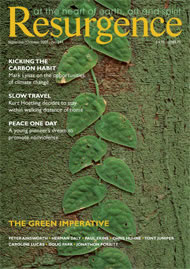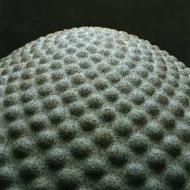TEN FULLY-GROWN African bull elephants share their combined weight with this monolithic new
installation. Harboured in a small, smoothly-bell-shaped chamber, Seed has become the focus of education and inspiration at the Eden Project, in Cornwall.
The sculpture was lifted through ninety degrees and received via a small hole in the centre of the education building at Eden – with only a few inches to spare – displaying to the awestruck visitors, the 1,800 nodules which cover the granite surface. The sheer mass of this sculpture dwarfs the visitor within the chamber, who has as little as 250cm of space between the wall and Seed.
The phyllotaxis pattern which the nodules form, is based on numerical relationships in nature: the
Fibonacci series, a recognised mathematical sequence which forms the basis of plant growth and is most obvious in the structure of flowers and cones.
A project joining architects, engineers, quarrymen, computer experts and an artist with his team of technicians and stone carvers, in its fruition achieves a synergy of not only nature and
humanity, but also art and architecture, space and light. This sculpture will remain, perhaps when all else has changed beyond our recognition, a bigger, weightier stone henge, a marker of
humanity’s awakening to a new relationship with Earth.
Read the full interview with Peter Randall-Page in the November/December issue of Resurgence.








